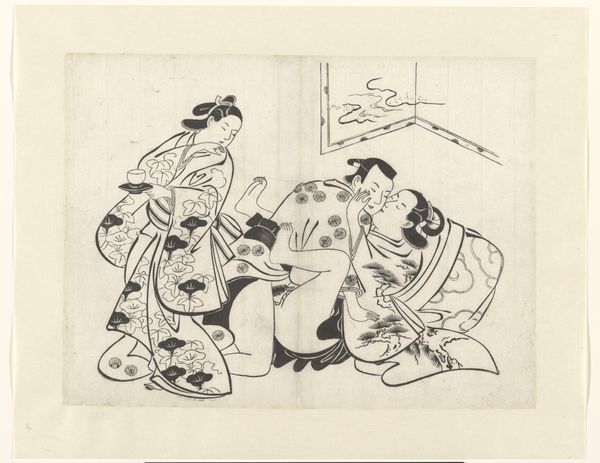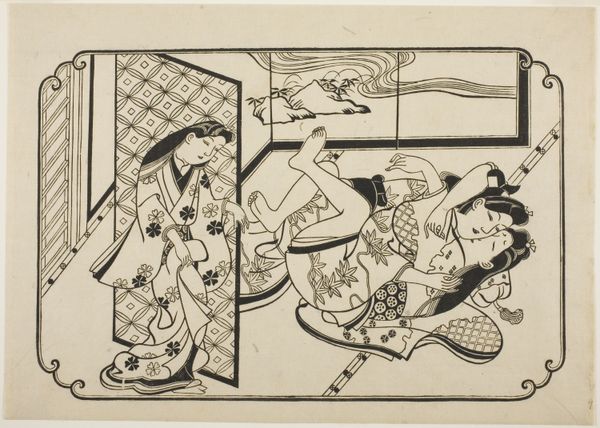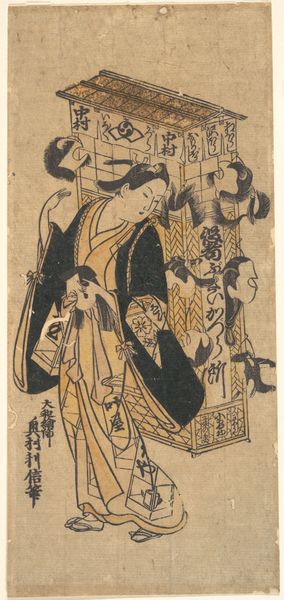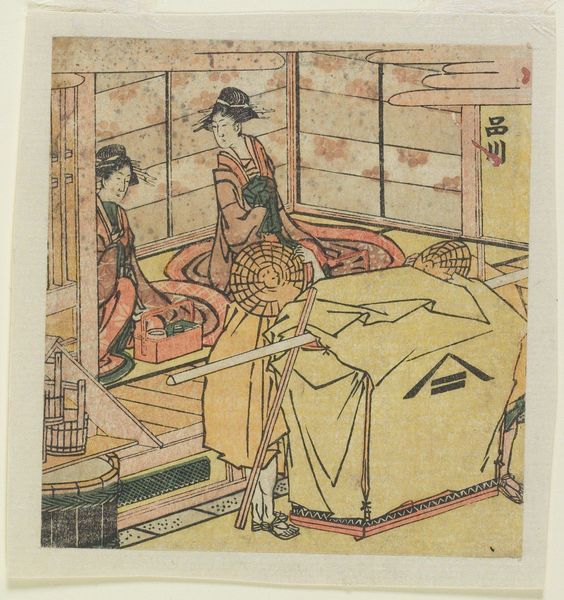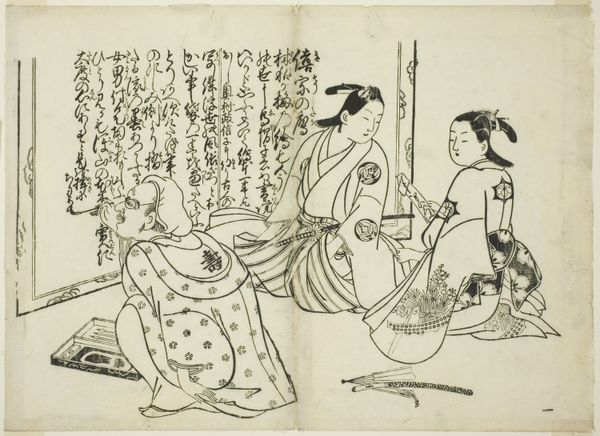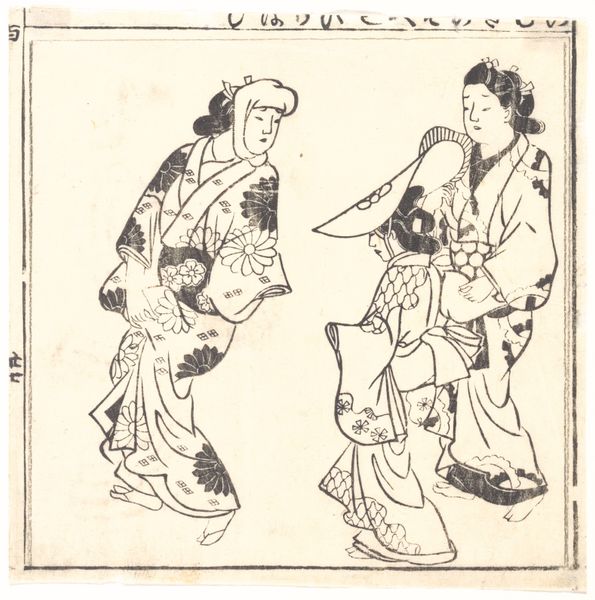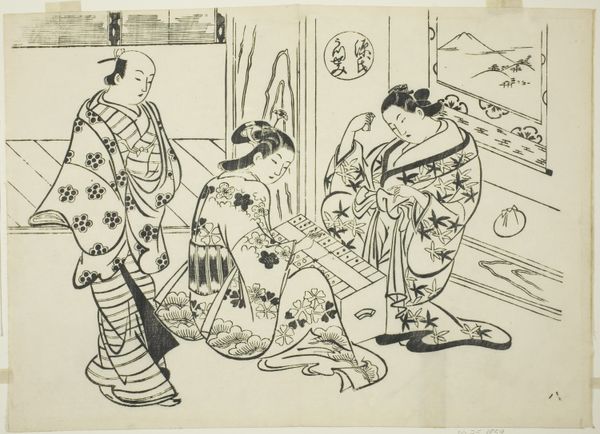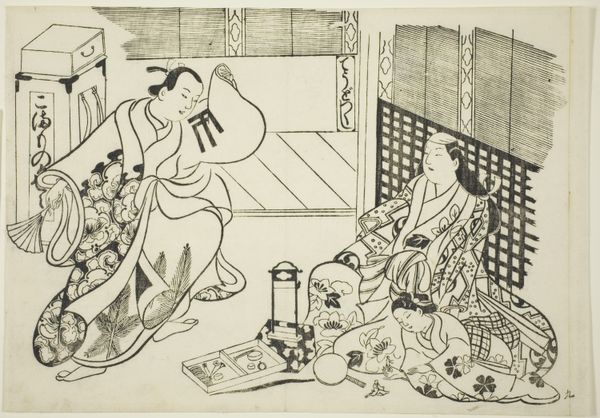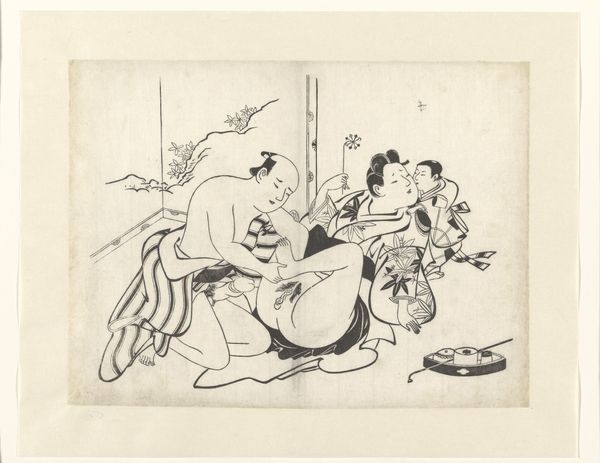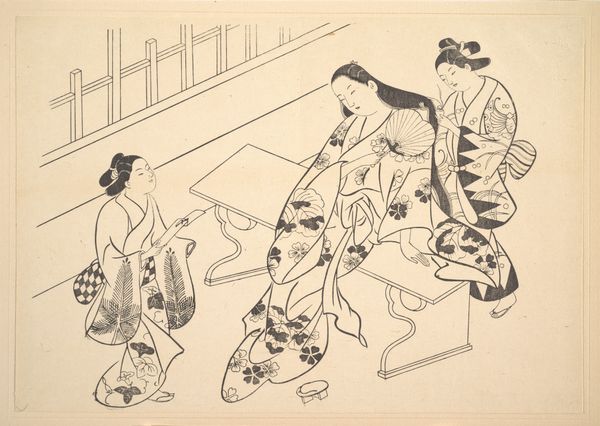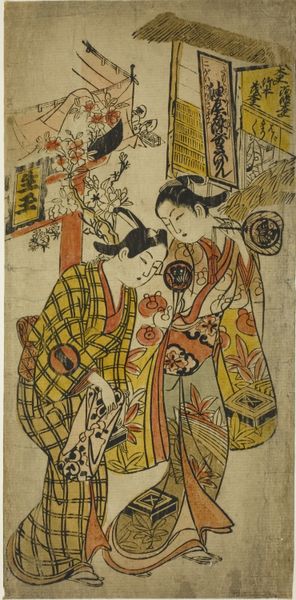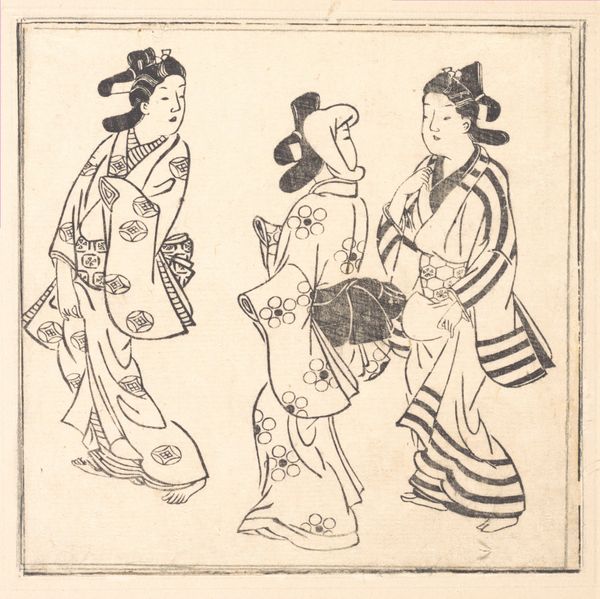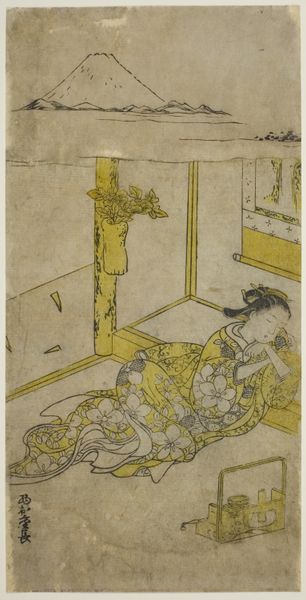
Leaf from a Book Entitled: Wakoku Hiaku-jo, One Hundred Japanese Women 1625 - 1694
0:00
0:00
print, woodcut
# print
#
asian-art
#
ukiyo-e
#
japan
#
figuration
#
intimism
#
woodcut
#
genre-painting
Dimensions: H. 6 1/2 in. (16.5 cm); W. 6 7/16 in. (16.4 cm)
Copyright: Public Domain
Editor: This is a woodblock print titled "Leaf from a Book Entitled: Wakoku Hiaku-jo, One Hundred Japanese Women," created sometime between 1625 and 1694 by Hishikawa Moronobu. It strikes me as incredibly intimate. Two figures, one attending to the hair of the other, fill almost the entire frame, which gives an unusual focus to the ordinariness of daily life. How do you read the composition? Curator: The power of this piece rests in its stark contrasts. Notice the interplay between the dense, almost calligraphic lines forming the women's robes and hair, versus the negative space defining their faces and hands. This deliberate tension creates a visual rhythm that directs the viewer’s eye. What’s the effect, would you say, of such dynamic structuring? Editor: It does guide my eye. The emptiness gives presence to the women’s expressions. Also, the subtle details, like the combs and mirror, draw me to look more closely at the daily life that is pictured. It isn't grand, but simple. Is there any commentary on the geometry here? Curator: Absolutely. Consider the flattened perspective and the nearly abstract patterns of the kimono, juxtaposed with the more representational elements like the mirror's reflection, creating a compelling dichotomy between flatness and depth. It flattens the hierarchy, suggesting art can be anywhere, not just at a historical event. Editor: It seems like Moronobu is elevating an ordinary moment to art by focusing on form and detail, not a traditional theme. It also flattens out gender roles somehow? Curator: Indeed. It provides food for thought to realize that such deliberate manipulation of form, line, and space elevates everyday life to something worthy of contemplation and provides an aesthetic framework to engage more profoundly with what we often overlook. Editor: I see now that focusing on those simple components lets us reconsider both art, and how we portray women in general. Curator: Precisely. Art opens up the avenue for reassessment using pure components, which generates new perspective.
Comments
No comments
Be the first to comment and join the conversation on the ultimate creative platform.
